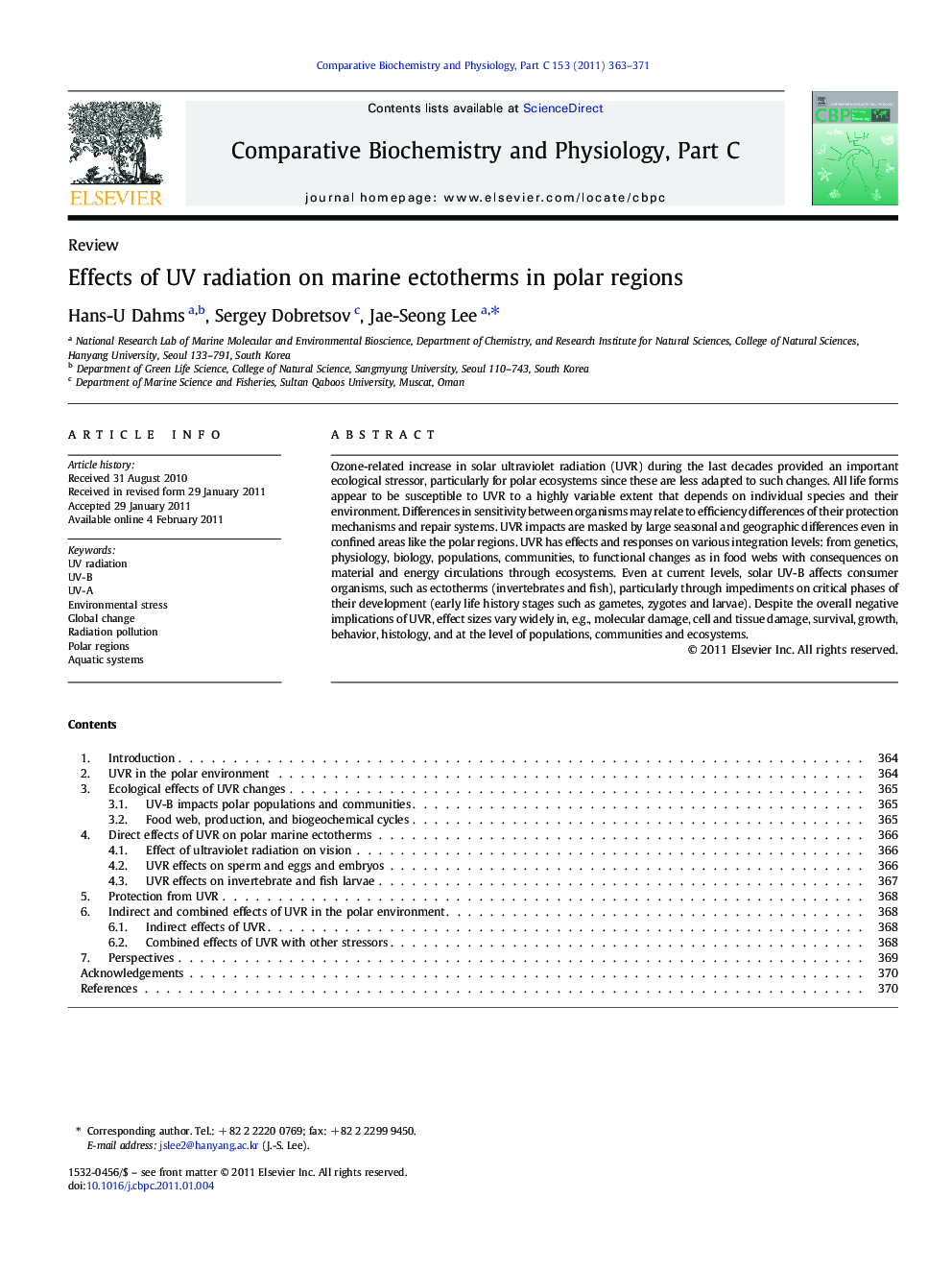| Article ID | Journal | Published Year | Pages | File Type |
|---|---|---|---|---|
| 10821724 | Comparative Biochemistry and Physiology Part C: Toxicology & Pharmacology | 2011 | 9 Pages |
Abstract
Ozone-related increase in solar ultraviolet radiation (UVR) during the last decades provided an important ecological stressor, particularly for polar ecosystems since these are less adapted to such changes. All life forms appear to be susceptible to UVR to a highly variable extent that depends on individual species and their environment. Differences in sensitivity between organisms may relate to efficiency differences of their protection mechanisms and repair systems. UVR impacts are masked by large seasonal and geographic differences even in confined areas like the polar regions. UVR has effects and responses on various integration levels: from genetics, physiology, biology, populations, communities, to functional changes as in food webs with consequences on material and energy circulations through ecosystems. Even at current levels, solar UV-B affects consumer organisms, such as ectotherms (invertebrates and fish), particularly through impediments on critical phases of their development (early life history stages such as gametes, zygotes and larvae). Despite the overall negative implications of UVR, effect sizes vary widely in, e.g., molecular damage, cell and tissue damage, survival, growth, behavior, histology, and at the level of populations, communities and ecosystems.
Related Topics
Life Sciences
Biochemistry, Genetics and Molecular Biology
Biochemistry
Authors
Hans-U Dahms, Sergey Dobretsov, Jae-Seong Lee,
